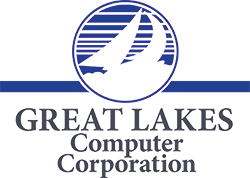[vc_row][vc_column][vc_column_text]
Powerful SMB solutions: managed IT services
Small- and medium-sized businesses in search of an improved bottom line can save a significant amount of money by transitioning their tech service and support needs to a managed IT services model. Even better, unlike some types of business shifts that require months or even years to generate pay off, a switch to managed services produces benefits that can be realized almost at once.
The drawbacks of fixed costs
IT outsourcing allows companies to move away from the traditional model in which most services are provided by an in-house IT department. In this approach, companies usually have large fixed costs in the form of salary for the personnel providing their IT services.
Unfortunately for SMBs, however, IT needs can often come in the form of “feast or famine.” When IT personnel are busy installing or upgrading software, all is well. The department, however, may have many days each month when their services are not strictly required. Under a fixed cost model, of course, SMBs cannot realize any savings from this down time. The solution is often a “make work” situation in which truly unnecessary tasks are performed merely to keep personnel busy. Unfortunately, this tends to make work for owners and managers as well, since they are often the ones who must come up with things for the dormant IT department to take care of.
The beauty of variable costs
In a managed services model, IT services are provided by remote staff that monitor machines and make adjustments as needed via internet technology. Although there are a variety of ways in which managed services can be arranged, one of the most common is the variable cost or “pay as you go” model. In this approach, SMBs agree to pay a managed services provider according to the exact services provided during each billing cycle.
If relatively little assistance is needed during a certain month, costs will reflect the situation accurately. This certainly helps the bottom line, keeping companies paying for the kind of “dead time” that can be associated with in-house IT personnel. It has another advantage, however: a variable cost structure can allow businesses to have greater control over their cash flow. A planned software upgrade, for example, can be scheduled to take place at a time when budgetary considerations make it most convenient.
How do you know though when the time has come to hire trained IT professionals?
This whitepaper will help you decide, plus offers advice about how to find the right service provider to meet the unique needs of your business.
In this whitepaper, you will learn:
-
- 6 reasons to consider outsourcing IT
- What type of services you should expect
- 6 important questions to ask any prospective provider
Source:
Learn more about the author Bob Martin
[/vc_column_text][/vc_column][/vc_row]
